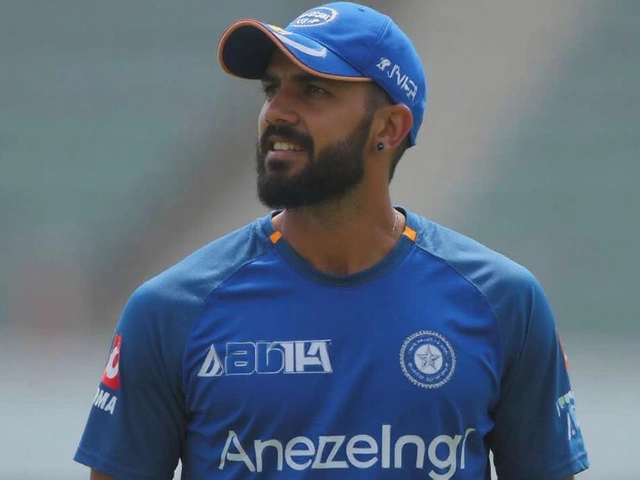Cheteshwar Pujara's Bold Suggestion for India's Second Test Lineup
International cricket often throws unexpected challenges and decisions for team selections are meticulously scrutinized. Ahead of India's second Test against Australia, Cheteshwar Pujara, the seasoned Indian Test batsman, has voiced a significant opinion regarding the batting lineup, sparking discussions among fans and analysts alike. Pujara, known for his calm demeanor and strategic approach, has suggested that KL Rahul should retain his spot as an opener, even with the availability of Rohit Sharma, India's star batsman, who traditionally opens.
This assertion comes as a surprise to many, primarily because there was widespread speculation that Rahul might be moved down the order. Considering Sharma's formidable record as an opener, it was expected that he would resume his usual position at the top. However, Pujara's suggestion challenges the status quo, positing that Sharma should ideally bat at number three, a pivotal spot that has often been occupied by Pujara himself. His proposition hints at a strategic reimagining of the order, emphasizing a blend of experience and form.
The Rationale Behind Pujara's Proposition
Pujara's backing for Rahul stems from his impressive performance as an opener in recent games. Rahul's consistency and ability to handle the new ball against top-quality bowling attacks have been integral in setting a strong foundation for the team. Pujara notes that stability at the top is crucial, especially when playing against formidable opponents like Australia. His experience and knowledge of the game lead Pujara to believe that a settled opening pair is key to success in Test matches, where the game duration allows for more strategic plays rather than quick turnarounds.
Furthermore, Pujara's suggestion benefits the team by utilizing Rohit Sharma's flexibility. Rohit has shown adaptability in his batting across different formats and positions, which could enrich the middle order's experience, potentially offering more stability and crisis management capabilities. Additionally, positioning Rohit at number three could exploit his ability to handle pressure and deliver critical innings under challenging conditions.
Implications for Team Dynamics and Strategy
The decision to rearrange the batting order not only affects personal roles but can significantly impact the team's strategy in approaching the game. By promoting KL Rahul as a constant at the top alongside Yashasvi Jaiswal, India can forge a dedicated pair capable of providing a steady start. This approach allows for a composed yet aggressive start, setting a tone that could intimidate the opposition and provide leverage to build on innings.
Pujara's endorsement also indicates trust in the younger Yashasvi Jaiswal, recognizing his potential and willingness to contribute meaningfully in high-pressure situations. As for Shubman Gill, Pujara's suggestion of slotting him at number seven might seem unexpected, but it highlights an interesting strategy. Gill's resilience and ability to score swiftly could prove advantageous in situations requiring quick runs or when the top order fails to provide an expected launchpad.
Another aspect to consider is the psychological edge that such a setup might provide. Pujara's input is undoubtedly tactical but also shows a keen understanding of each player's mental framework. Encouraging players to adapt to different roles can foster versatility and readiness, crucial for succeeding in series as intense as those against Australia.

Conclusion: A Calculated Decision with Far-Reaching Outcomes
If India adopts Pujara's suggested lineup, it could witness a fresh yet potentially rewarding structure. The support that Pujara extends towards Rahul now becomes a catalyst for a broader team dynamic shift. With deft handling by both players and management alike, this modified lineup could surprise adversaries and enhance team performance. While not universally agreed upon, Pujara's take underlines the dynamic and ever-evolving nature of the game, where decisions are made based on current form, future potential, and strategic advantage.
As India steps into the second Test, these changes serve as a testament to the importance of teamwork, the flexibility of strategies, and the role of seasoned players like Pujara in shaping the team's destiny. Fans and critics will eagerly watch to see if this gamble pays off, potentially setting precedents for future team selections and game plans.



